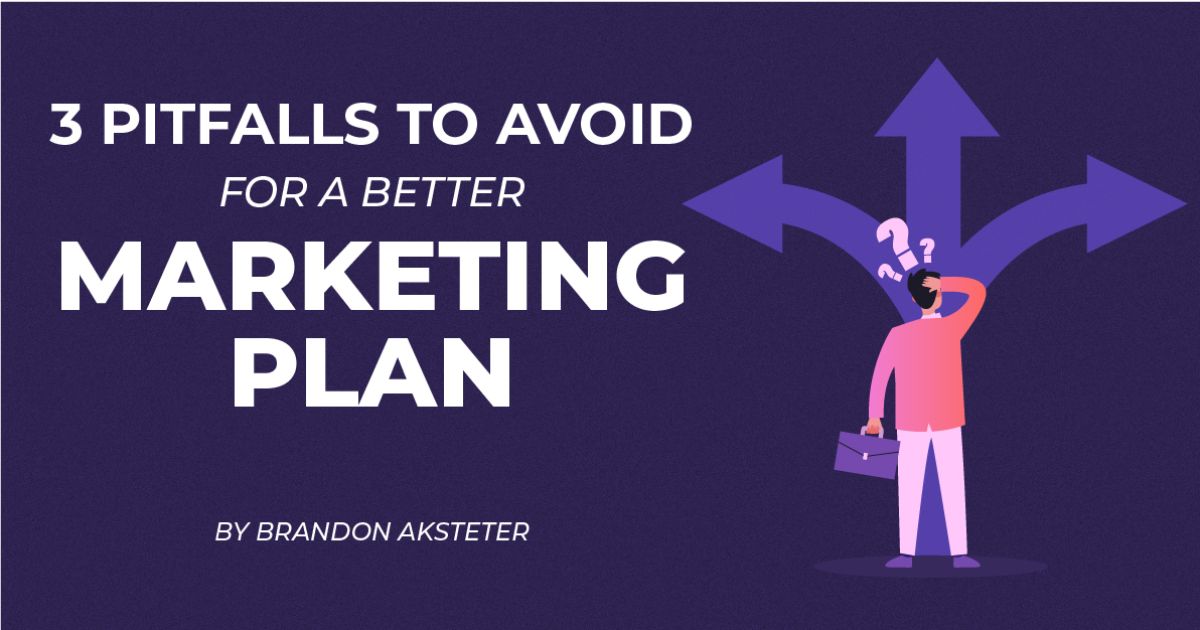Executing your marketing plan is all fun and games until your media budget gets hurt. That’s the saying, right? Either way, a data-driven and actionable marketing plan is often a test of whether your organization can actually “walk the walk” or simply “talk the talk” when it comes to marketing and advertising. That’s because all too often, marketing plans are designed around faulty principles that don’t actually help move the needle—leading to wasted budgets, unrealized expectations, and frustrated marketing teams.
Here are three common mistakes to avoid in your next marketing plan:
- Advertising where you want to, instead of where your audience is.
One of the most exciting aspects of developing your marketing plan is selecting the channels and tactics that make up your media mix. Depending on the size of your budget, it can be easy to get carried away at this stage. We all love seeing our ads in the places we’re familiar with: the billboards along our commute, the apps or websites we browse at home, or even during our favorite TV shows.
But remember, your marketing plan is not about you. It’s about your audience. In fact, if you are not extremely similar to your target audience, seeing your own advertising could mean you are wasting precious marketing dollars. Instead, lean on research findings (e.g., online market research reports, customer surveys) to determine where your audiences spend most of their time and where they’ll be most receptive to your messages. Then build your media mix based on data, not personal preference.
- Spreading your budget too thin.
Similar to selecting the wrong channels and tactics for your marketing, it can be just as easy to select too many. It’s true, of course, that the more touchpoints you create with your audience, the more likely they will be to remember your brand during a purchase decision. However, even for the biggest brands out there, marketing budgets are never limitless—and neither is the bandwidth of your staff who will need to continuously supply every marketing tactic with engaging and fresh content.
Instead of focusing on the sheer quantity of your advertising, aim for quality by focusing on a select handful of channels or tactics where you have adequate resources to make a significant impact. Think about it this way: your audiences will remember you more as the brand with “those funny commercials” than for vaguely recalling they might have seen your ads on Facebook, on the radio, in the newspaper, or on TV.
- Identifying metrics, but not measuring.
CPM, CPC, CTR, CPA, bounce rate, conversion rate—as marketers, we love to fill our marketing and media plans with buzzwordy, abbreviated metrics. They sound great, and it gives the appearance that a plan is designed to achieve real results. But without ongoing measurement and analysis of those metrics before, during, and after a campaign, what do they really mean? How can you be sure your marketing dollars are actually making a difference for your business?
Before you launch your campaign, develop your benchmarks. How many website visitors per month are you currently getting? How many social media followers do you have, and what is their level of engagement? Depending on your objectives, there are many different benchmarks you can set—just be sure to align them with the metrics you’ve included in your marketing plan. Then, while your campaign is running, monitor its performance against these metrics. You are in control of your marketing budget. If something isn’t working, rely on your data to make a change.
Most importantly, ask yourself, “What role do my performance metrics play in helping me achieve my broader organizational goals?” Increasing click-through rates is fantastic, but if it doesn’t make a difference in your bottom line, you may be relying on the wrong metrics.
Need help developing or strengthening your marketing plan? Contact LMD.

